September 11 - 17, 2011: Issue 23
Ethel Jean Sophia Curlewis
7th of February 1898 - 28th of March 1930
OCEAN TONIC
Swirling waters that foam like brisk wine
catch the bathers on the very edge of the ocean.
Stirring them in a maelstrom of bubbles.
Buffeting their bodies.
Loosening their limbs.
Awaking their livers.
And tossing them light-hearted and
laughing on the yellow sand.
Jean Curlewis, 1929
Born at Mosman and educated at Sydney Church of England Girls' Grammar School, Jean Curlewis grew up in a cultured and literate upper-middle class family. Her mother was Ethel Turner, popular author of the Seven Little Australians.
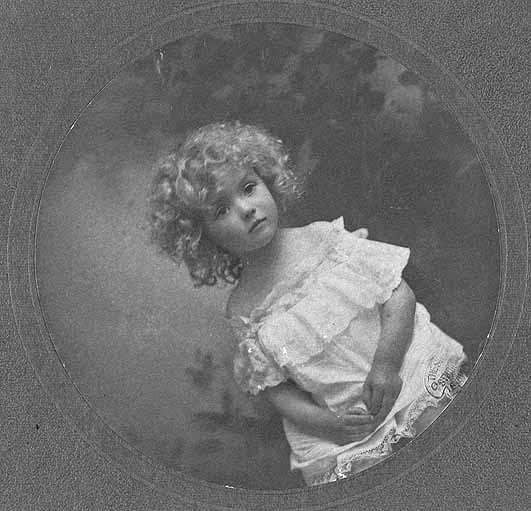
Above: Jean as a girl, 1910. nla.pic-an10998777-171.
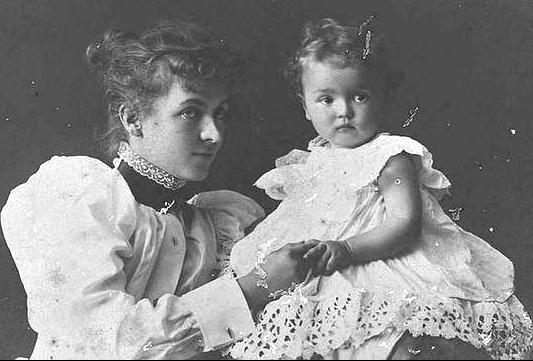
Ethel and Jean 1898 Part of Philippa Poole photograph collection, both courtesy National Library of Australia.nla.pic-an10998777-310.
Her father was Herbert Raine Curlewis, born to Bondi residents, Frederick Charles Curlewis, brickmaster, and his wife Georgina Sophia, née O'Brien. Georgina’s family owned what was called the ‘Bondi Estate’ and Herbert was born at the O’Brien homestead named Hermsley, which also became the name of the Curlewis house on Florida road, Palm Beach.
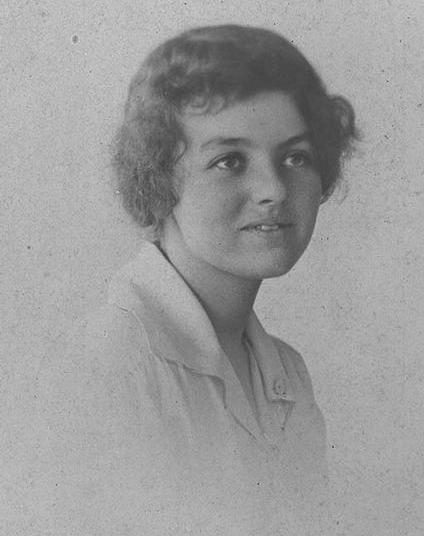
Above: Jean in her twenties, by Katherine Elder, Mosman, from the Philappa Poole Collection (grand-daughter of Ethel Turner and Adrian's daughter), courtesy the National Library Of Australia. Pic. an10998777-8
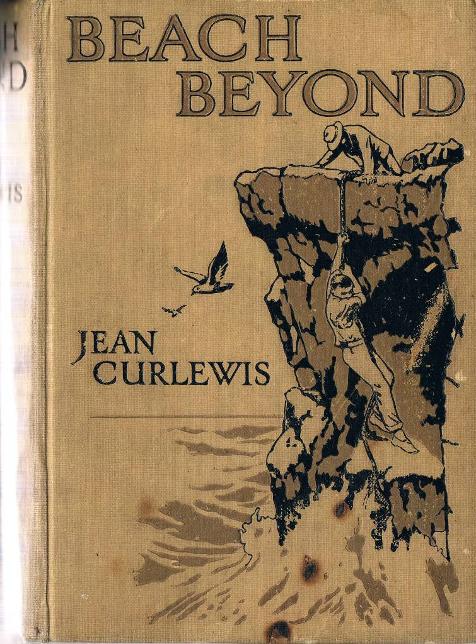 While growing Jean and her family had frequent trips to Pittwater and stayed at Palm Beach. Her 1923 book, Beach Beyond, not only addresses a man suffering from tuberculosis, from which she later died and been diagnosed with whilst writing this work, but also describes the way Palm Beach was. Soon after the book opens surf life saving rises as a topic for a surf community (cream of Sydney society) that spends six months of the year at ‘Beach Beyond’ due to the fact that a ‘chauffeur’ had drowned the previous year at the beach.
While growing Jean and her family had frequent trips to Pittwater and stayed at Palm Beach. Her 1923 book, Beach Beyond, not only addresses a man suffering from tuberculosis, from which she later died and been diagnosed with whilst writing this work, but also describes the way Palm Beach was. Soon after the book opens surf life saving rises as a topic for a surf community (cream of Sydney society) that spends six months of the year at ‘Beach Beyond’ due to the fact that a ‘chauffeur’ had drowned the previous year at the beach.
Jean’s brother Adrian, one of the founding members of the Palm Beach Surf Life Saving Club, had witnessed the drowning of Lt. Col. Douglas Marks who attempted to save Miss Johanna Rogers on January 25, 1920. Adrian was determined to do something about this incident and what had been considered a 'safe' beach, and was one of the forming members of Palm Beach Surf Life Saving Club for the 1921-22 season. The work demonstrates her strong knowledge of not only tides, currents and rips but her technical knowledge of signalling devices such as a heliograph and of surf life-saving procedures.
All of Jean’s works evoke a strong sense of place and Palm Beach, the subject of Beach Beyond, and mentioned again in The Ship that Never Set Sail (1921) as well as Pittwater featuring in her other works. Palm Beach was considered to be ‘beyond Sydney’ and lent itself to the adventure stories she created to develop her ideas. From an early age she was exposed to the best minds in Australia. On an overseas trip her mother records her speaking at length with Lord Tennyson. Henry Lawson was a frequent visitor to the Curlewis home at Mosman.
Jean was also raised to have a social conscience though and served as a Voluntary Aid during the 1919 flu epidemic that swept through Sydney. It is likely that it was here that she contracted and developed the beginning of the tuberculosis.
In 1923 she married:
"ROSE CEREMONY"
CHARLTON-CURLEWIS
A "rose" wedding might be termed the nuptial ceremony at St. Luke's, Mosman, last evening, when Miss Jean Curlewis, daughter of Judge and Mrs. Curlewis ("Ethel Turner"), of Avenel, Mosman, was married to Dr. Leonard Charlton, second son of Dr. and Mrs. P. Charter Charlton, of Rushall, Pymble. The bride's girl friends decorated the church with masses of pale pink and deep red roses, and the guest pews were Indicated with tall wands topped by loose bunches of pink and red roses, intermingled with white boronia.
The ceremony was performed by Canon Charlton, assisted by Rev. Leo Charlton and Rev. F. W. Reeve. Mr. Keith Barry was at the organ. The bride's graceful gown of ivory satin beaute, slightly draped at the sides, was veiled with crystal embroidered tulle. The court train of silver tissue was brocaded with a design of open roses in thick silver thread. A plain tulle veil and tiny, trail of orange blossoms were worn, and a lovely bouquet of white rosebuds and pale boronia was carried. The bridesmaids. Misses Alisa Cullen, Amy Hungerford, Hylda Holdship, Lucille Stewart, wore frocked-in rose pink taffetas of early Victorian bouffant style, each with a different waist posy. They wore black tulle hats set with pink posies, and carried early Victorian posies of rosebuds in lace surrounds, and wore necklaces of pink coral, the bridegroom's gift. J The bride's brother, Mr. Adrian Curlewis, was best man, Dr. Cunningham, Mr. Topi Barnet, and Mr. Bernard Holt were groomsmen.
The reception was held at Avenel, where over 100 guests were entertained by Judge and Mrs. Curlewis. The reception rooms and the supper marquee were decorated with masses of, pink and red roses. Mrs. Curlewis wore a black sequined slightly trained gown, with hanging undersleeves of kingfisher blue georgette, and a large black hat, and carried a Victorian posy of pale pink carnations, lavender, and blue pansies. The bridegroom's mother was gowned in grey marocain, with a drapery of line grey silk lace, and wore a black hat, and carried a bouquet of, mauve flowers.
Among the guests were the Lieutenant-Governor (who proposed the health of the bride) and Lady Cullen, Dr. and Mrs. Charter Charlton, Canon Charlton, Mr. Justice Ferguson and Mrs. Ferguson, Judge and Mrs. Rolin, Sir- Joseph and Lady Carruthers, Mr. and Mrs. Claude Curlewis, Mr. and Mrs. C. J. Cope, Lady Mackellar and Miss Dorothea Mackellar. Professor, and Mrs. Peden, Mr. and Mrs. Sidney Mack, Lady Hay, Mr. and Mrs. Lindsay Thompson, Mr. Douglas Lindsay Thompson, Professor and Mrs. Fawsift, Mrs. and the Misses Pockley, Mr. and Mrs. Holloway, Miss Lorna Hinder, Dr. Roland Pope, Dr. and Mrs. Gordon Craig, Mr. and Mrs. Sidney Gilchrist, Miss Harvey. Mr. Herbert Palmer, Mr. and Mrs. Leslie Curlewis, Mr. and Mrs. Moors. Colonel and Mrs. Fraser Clarke. Mr. and Mrs. Nott, Mrs. Hungerford. Dr. Macdonald Gill, Professor Sir Edgeworth David and Lady David. Mr. and Mrs. V, Danger Owen, Dr. Frank Lawes, Rev. F. and Mrs. Reeve, Mr. and Mrs. Alec- Thomson, Rev. Leo Charlton, Miss Dight, Mr. Lockhart Gibson, Mr., Mrs., and Miss Raine, Miss Busby, Miss Cowper, Mrs. R. H. D. White. Mr. John Ruse, Mr. and Mrs. Selwyn Curlewis, Mr. and Mrs. Ken. Winchcombe, Mr. and Mrs. Rex Curlewis. Judge and Mrs. Mocatta. Dr. Cunningham. Dr. . and Mrs. Cecil Charlton. Mrs. J. H. Forbes, Mr. and Mrs. Clive Curlewis. Mr. John Want, Atr. B. Holt, Atr. and Airs. Phillips, Mr. and Mrs. Lloyd, Mr. Keith Bairy, Mr. and Mrs. Augqnsen, Mr. and Mrs, M'Leod, Major and Mrs. Cameron, Mr. and Mrs. V. Deane, Mr. and Mrs. I. J. Charlton. '
The bride's going-away toilette was a three-piece costume of French grey marocain and an almond green cloche hat. The bride and bridegroom will leave for England on Saturday. Dr. Charlton intends entering the big English hospitals for experience.
The bride of Dr. Leonard Charlton. She was Miss Jean Curlewis, the clever young literary daughter of Judge and Mrs. Curlewis (Ethel Turner). "ROSE CEREMONY" (1923, October 24). The Daily Telegraph (Sydney, NSW : 1883 - 1930), p. 5. Retrieved from http://nla.gov.au/nla.news-article245998260
What did Jean see in London? - This:
Her later years were spent in a family cottage at the Blue Mountains and in private hospitals where she succumbed to the disease she had fought for almost a decade by then.
A pretty woman, with a grace in her soul, her celebration of Australia’s landscapes, and particularly Pittwater and Palm Beach as an annual visitor who came in Spring and stayed until Summer waned, gave us insights we would be poorer without.
CHARLTON. —March 28, 1930, Ethel Jean, wife of Dr. Leonord Charlton, and daughter of his Honor Judge and Mrs. H. R. Curlewis, Avenel, Mosman, aged 31 years. Family Notices (1930, March 29). The Sydney Morning Herald (NSW : 1842 - 1954), p. 14. Retrieved from http://nla.gov.au/nla.news-article16637842
NOTED AUTHORESS
Miss Curlewis Dead
SYDNEY, Today.
Mrs. Leonard Charlton, formerly Miss Jean Curlewis, only daughter of Judge and Mrs. Curlewis, died yesterday. She was the wife of Dr. Leonard Charlton.
Mrs. Charlton originated the children's section of "The Daily Telegraph," and wrote several books. She was a well-known contributor to "Art in Australia." NOTED AUTHORESS (1930, March 29). News (Adelaide, SA : 1923 - 1954), p. 1 (SPORTS EDITION). Retrieved from http://nla.gov.au/nla.news-article128982217
JEAN CURLEWIS DEAD
SYDNEY, Saturday
The daughter of Ethel Turner, the most beloved of Australian writers, Mrs. Leonard Charlton (Jean Curlewis), died on Friday, in a Macleay-street Private Hospital, after a long illness. She was 31 years, of age. In her novels she revealed a fine sense of romance, that appealed to all. Jean Curlewis made Palm Beach the setting for most of her stories, and there will be a gap in literary and social circles by her passing. JEAN CURLEWIS DEAD (1930, March 30). Sunday Mail (Brisbane, Qld. : 1926 - 1954), p. 4. Retrieved from http://nla.gov.au/nla.news-article97667091
FOR WOMEN
JEAN CURLEWIS.
AN APPRECIATION.
(By G. S.)
Five or six years ago, I read with delicate series of articles In the columns of "Sydney Morning Herald." They were about life In London, written from an Australian standpoint, and were signed "Jean Curlewis. So fresh and spontaneous were they, so exciting, so personal and Intimate, that I seemed to be sharing in the adventures, and to be seeing London for the first time, with all the never-to-be-recaptured thrill of such an experience. Jean Curlewis became writer to watch for, and she always came up to expectations. One learnt that she was the daughter of Ethel Turner (so beloved in om youth for her Australian stories), that she was a youthful bride spending two years in London with her doctor husband while he did post-graduate work. Now and again I came across a poem over her signature - always a Joy to read.
Four years ago, when I came to Sydney live, Jean Curlewis had Just returned with her husband from her two years in England, and a mutual friend brought us together. I found her a lovely little person, with a sweet flashing smile, big grey eyes, and a soft voice with a happy lilt in it, curiously haunting.
In her floating pink draperies she looks like a Dresden china doll. But her keen brain was apparent in the first few minute conversation. I never met anyone so quick at seeing to the heart of a subject, so clever in her thinking-and, with it all, so ready I listen to the views of others, and so generous to their ideas.
My first impression of her as a singular! winning and lovable personality strengthens as time went on, and as I came to win the gift of her friendship. Her charm was irresistible, and it was backed by a rare an unmistakable sincerity. Shams of any kin could not exist in her presence. More than anyone I know she saw life steadily, and saw it whole. She was never afraid of fact) She faced them squarely, and resolved them into her fine philosophy in such a manner that they became part of the harmony of life
Jean Curlewis stood for something very rare in Australian literature. Her writing had finish, an economy, a certain sophistication to use the word in its best sense-that made it outstanding. She was never sloppy, never sentimental, yet she could be tender and deeply sympathetic. If she wished to write of something sad, she did it with such restraint that one had the impression of discovering the sadness for oneself. The obvious and the commonplace had no place in her work. Always she put the fresh point of view, the unexpected presentation.
Jean Curlewis was a good Australian. She could interpret Australia to the Australians She revealed qualities in our country that we just did not know were present. She was Australia’s consciousness, and saw beneath the surface to the fundamental character of the country.
I remember an article she wrote Just after her return from England. In it she spoke of her fear that in leaving London she would be leaving behind her the cultured talk of the latest books and plays and movements, modern art and decoration, and all such evidences of an old civilisation.
Yet, soon she found exactly the same talk she had left in London-the same ornaments and decoration. For a moment she was delighted. But swiftly came the realisation that these things did not belong to Australia. Australia's contribution to the world must be along other lines. We must be original, and not mere copyists. What was clever talk in crowded London sounded curiously thin and unreal In this country of wide open spaces. She passionately longed for Australia to work out her destiny along Independent lines, and her faith in Australia's future was profound.
One of her finest pieces of writing was done for the Sydney number of Australia Beautiful. There, in the space of a few pages, in exquisite language, each sentence a gem, she sketched the early beginnings of Sydney so poignantly that one wept for Governor Phillip's heart-breaking task of colonisation with his handful of convicts. From this be-ginning she led us through the vicissitudes of the early days to the easy comfort of to-day. Sketching with a sure and delicate touch various aspects of Sydney, she gradually built up a composite picture of the Sydney of our dreams-blue sky and yellow sea beaches; suburbs sweet with roses and babies; prosperous industrial centres; sky scrapers; modern machinery-and a people so convinced that living was more important than working, that, as she whimsically expressed it, they would work their fingers to the bone to maintain their right to leisure.
Her deep love for Sydney comes out in the last sentence of this article: "One thinks that if the old map-makers had been inscribing Sydney on their maps they would have written not 'Here is much gold,' or 'Here be marvels,' but 'Here is a city which haunts the heart.' "
And hers was a personality that likewise haunts the heart. Through the long months of her last illness, her courage, her cheerful-ness, her sweet unvarying patience, her utter unselfishness-these are qualities that will always leave their mark on those who knew her. Ever will she haunt our hearts. FOR WOMEN JEAN CURLEWIS. (1930, April 3). The Sydney Morning Herald (NSW : 1842 - 1954), p. 5. Retrieved from http://nla.gov.au/nla.news-article28045948
Jean Curlewis
Died March 28, 1930.
WHERE have you gone, O boat with sails of pearl?
The dreams, the laughter of the living girl?
The delicate, rare touch of fantasy
Lost ... in the blue bays of Eternity?
Somehow I think you signal from afar
In this brown rose leaf — that white, falling star.
A brown cove of Adventure hides you still;
The moonray of a castle on the hill;
Some tower of Avalon has seen you pass;
Some green Hy-Brasil . . . and the fairy grass
By fragile minarets of blue bells sprung
Knows you for ever glad — for ever young.
The breath of genius in that small, slim girl
Makes fragrant winds to fill those sails of pearl!
— M. Forrest.
Jean Curlewis (1930, April 23). Sydney Mail (NSW : 1912 - 1938), p. 14. Retrieved from http://nla.gov.au/nla.news-article160633950
TO JEAN CURLEWIS.
(ETHEL TURNER'S DAUGHTER).
Vale! Sweet singer of the different song!
Fair lays, young with Elizabethan dew,
You won from Rime's rare fields, known to
how few
Who scatter Fancy's lyric seeds along!
Your darling love, the sea, with tall ships
strong,
Perchance gave you your gallant, boyish view.
No mere girl-writer you! Your vision blue
Swept far horizons with a rollicking throng.
Yet am I stretched apart this April day
With stinging tears for Poesy's sad loss;
My heart cleft open with a sorrow wide,
As once it knew when midst blithe childhood
play,
I lay grief-stricken on my fairy moss,
Because a little book-girl, "Judy," died.
ZORA CROSS.
TO JEAN CURLEWIS. (1930, April 5). The Sydney Morning Herald (NSW : 1842 - 1954), p. 11. Retrieved from http://nla.gov.au/nla.news-article16639491
Death of Jean Curlewis.
MRS. LEONARD CHARLTON, nee Miss Jean Curlewis, a writer of numerous articles in magazines and newspapers, and author of numerous romantic novels, died in a private hospital on March 28, after a lengthy illness. She was 31 years of age, and was the daughter of Judge Curlewis and Mrs. Curlewis, who was Miss Ethel Turner, the well-known-writer. Mrs. Charlton was the author of "The Ship That Never Set Sail," Drowning Maze," "Beach, Beyond." "The Dawn Man," and "Verse Writing for Beginners." Death of Jean Curlewis. (1930, April 10). The Queenslander (Brisbane, Qld. : 1866 - 1939), p. 64. Retrieved from http://nla.gov.au/nla.news-article23121062
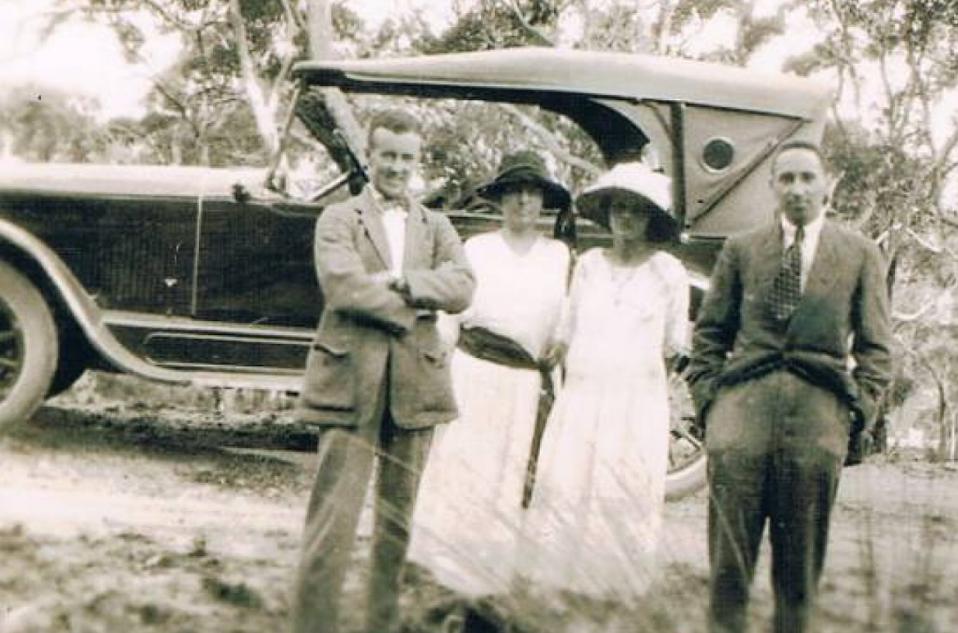
Further:
- The Breakers at Beach Beyond, 1901 – 2011 by Philippa Poole
- Sir Adrian Curlewis
- Ian Curlewis - Profile
- 2018 Ferry Name Reach For Longevity In An Environment Crusader And An Environment Author To Engage The Young Needs The Gibbs-Turner Original Magic Button
Brawley, Sean.1996. Beach Beyond. A History of The Palm Beach Surf Club 1921-1996. UNSW Press. Sydney. 2052.
Books
Curlewis, Jean, The Ship That Never Sailed, Ward, Lock & Co., London, 1921
Curlewis, Jean, Drowning Maze, Ward, Lock & Co., London, 1922, 255 pp.
Curlewis, Jean, Beach Beyond, Ward, Lock & Co., London and Melbourne, 1923, 242 pp.
Curlewis, Jean, The Dawn Man, Ward, Lock & Co., London, 1924, 251 pp.
Curlewis, Jean, Verse Writing for Beginners, Ward, Lock & Co., London, 1925, 62 pp.
Curlewis, Jean. And Feint, Adrian (decorated by), Christmas in Australia, Art in Australia Ltd, Sydney, 1928, [11] pp.
Turner, Ethel. & Curlewis, Jean, The Sunshine Family: A Book of Nonsense for girls and Boys, Ward, Lock & Co., London, 1923, 192 pp.
OUR NEW STORY. BEACH BEYOND.
'Beach Beyond", written by Jean Curlewis, was published as a serial in the Sydney Morning Herald from 09 March 1923 to 14 April 1923.
Miss Jean Curlewis, the author of "Beach Beyond," our new serial story, the opening chapter of which will appear in Friday's issue, has already achieved a considerable reputation us a writer by the publication of two widely read novels, "The Ship That Never Set Sail" and "Drowning Maze. " Hers is an inherited talent. Her father, Judge Curlewis of Sydney, is learned in the law, and her mother is known to countless readers throughout the world as "Ethel Turner " the author of "Seven Little Australians" and a score of other stories which have given their writer a place of honour in the ranks of Australian novelists.
Miss Curlewis has already shown that she is an able story teller who is possessed of strong yet restrained powers of imagination. Not the least valuable of her gifts is that of describing scenery. As her stories have a local setting, she is bold in challenging the critics, but, as she is accepted in her own country, she already has the justification of success.
"Beach Beyond" is a story of mystery which will appeal to a wide audience. It is a tale of adventure on a lonely beach north of Sydney. His prowess as a member of a metropolitan surf club brings a young man, Merrick, to the notice of his employer, a Napoleon of finance and leads to the abandonment of a city office, with its dull routine, and his appointment as life saver at the "Beach Beyond," where the Napoleonic one and his family are members of a week-end surfing colony. By the vagaries of currents Beach Beyond suddenly lost its reputation for safeness. A channel had appeared and a chauffeur been drowned. This has disturbed Merrick's employer. There are also vague stories of most peculiar happenings. As might be expected, strange and mysterious things occur which it would be unfair to the author to disclose at this stage. The sport-loving and romantic youth of this country will find this story of absorbing interest and those of an earlier generation will also derive much pleasure from the reading of it.
OUR NEW STORY. (1923, March 7). The Sydney Morning Herald (NSW : 1842 - 1954), p. 14. Retrieved August 1, 2011, from http://nla.gov.au/nla.news-article16074258
Miss Clare Curlewis is entertaining a house party at Palm Beach for the New Year. Her guests include Miss Ann Bevan, Miss Jocelyn Curlewis, Major Royce Shannon, Mr. Fred McNlcoll, Mr. Max Shannon, and Mr. John Forsyth.
Social and Personal. (1934, January 4). The Sydney Morning Herald (NSW : 1842 - 1954), p. 13 Supplement: Women's Supplement. Retrieved from http://nla.gov.au/nla.news-article17037621
FUNERALS; CURLEWIS – The funeral of the late Miss EYRE CURLEWIS will leave her late residence Hermsley, Florida Road Palm Beach, This Saturday Afternoon at 1.45 o’clock for South Head Cemetery.
Family Notices. (1938, November 12). The Sydney Morning Herald (NSW : 1842 - 1954), p. 10. Retrieved from http://nla.gov.au/nla.news-article17536975
Hermsley, the O'Brien homestead in Bondi where Herbert R. Curlewis was born [picture] National Library of Australia, Pictures collection; nla.pic-an10998777-345.
Early owners of the Bondi Estate are recalled: Francis O'Brien in both FRANCIS and O'BRIEN STREETS, and his father-in-law, "Monitor" Hall, in EDWARD and HALL STREETS. CURLEWIS STREET commemorates yet another owner of the Bondi Estate: Judge Frederick Charles Curlewis, grandfather of another well-known Bondi resident, Judge Adrian Curlewis. From http://www.waverley.nsw.gov.au/__data/assets/pdf_file/0006/8772/What_in_a_name.pdf
Herbert was born on 22 August 1869 at Hermsley (name of house), Bondi, eldest son of native-born parents Frederick Charles Curlewis, brickmaster, and his wife Georgina Sophia, née O'Brien.
From: adbonline.anu.edu.au/biogs/A120326b.htm
JUDGE H. R. CURLEWIS
SYDNEY, Sunday.-After an illness that has lasted almost since his retirement three years ago, Judge Herbert Raine Curlewis died at his home at Mosman todav, aged 73. For many years he was regarded as the most colorful and most drastic member of the N.S.W. Bench. He was first appointed to the Arbitration Bench in 1917, and 11 years later to the District, Court and Quarter Sessions Bench. He was also a lecturer at the Sydney University and author of a number of publications on law. He is survived by his widow, better known as Ethel Turner, the popular Australian authoress, and a son, Capt. Adrian Curlewis, who is missing in Malaya.
JUDGE H. R. CURLEWIS. (1942, October 12). Advocate (Burnie, Tas. : 1890 - 1954), p. 2. Retrieved September 1, 2011, from http://nla.gov.au/nla.news-article68784119
Widely-flared slacks and a tailored shirt compose the fashionable attire for women guests at Palm Beach parties, unless shorts and shirt, which are equally fashionable, are chosen. Smart cream slacks and a navy shirt were worn by Mrs. Alrema Samuels on Saturday evening, when she entertained at a cocktail party at her home in Florida-road to announce her engagement to Captain Rex Beale. Mrs. Samuels is the elder daughter of the late Mr. Louis Becke, whose stories of the South Sea Islands made his name as a writer world-famous, and of Mrs. F. S. Becke, of London, and her fiance is the only son of the late Mr. Beale and Mrs. V. Beale, of Mosman. Their marriage will take place early in the new year. About sixty guests were present, including the hostess' sister, Miss Niva Becke, Mr. and Mrs. Dan Carroll, Mr. and Mrs. Adrian Curlewis, Mr. and Mrs. George Merivale, Mr. and Mrs. David B. Hunter, Mr. and Mrs. A. S. Henderson, Mr. and Mrs. F. Langley, and Mr. and Mrs. Byram Mansell.
SOCIAL & PERSONAL. (1935, December 2). The Sydney Morning Herald (NSW : 1842 - 1954), p. 4. Retrieved September 1, 2011, from http://nla.gov.au/nla.news-article17229021
Visit: Early Pittwater Surfers: Palm Beach I - Alrema Becke: Queen of Palm Beach
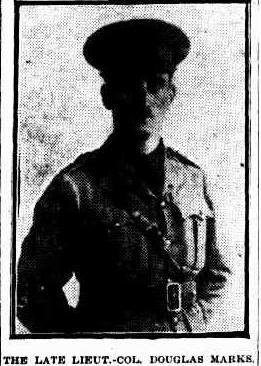 BRAVE OFFICER DROWNED. DOUBLE FATALITY.AT PALM BEACH.
BRAVE OFFICER DROWNED. DOUBLE FATALITY.AT PALM BEACH.
In a brave but unsuccessful attempt to save a young woman who had been carried out by the undertow at Palm Beach yesterday afternoon Lieutenant-Colonel Douglas G. Marks, who served with distinction in the war, lost his life. Miss Johanna Mary Rogers, aged 32 years, whom he attempted to rescue, was also drowned.
THE LATE LIEUT-COL DOUGLAS MARKS
Miss Rogers, who resided at Catherine-street, Leichhardt, was surfing with several friends, when a strong current carried her out. Lieut.-Colonel Marks was on the beach at the time with another picnic party. He was fully dressed, but without, attempting to divest himself of more than his coat he plunged into the water, carrying out with him a length of rope. After he had swum out some distance this broke, and he also was carried out by the undertow, and was seen to sink.
Later in the afternoon the body of Miss Rogers was recovered, but up till a late hour the body of Colonel Marks had not been found.
Lieutenant-Colonel Marks was 24 years of age, and resided with his parents, Mr. and Mrs. Montague Marks, at Lindsay-street, Neutral Bay. During the war he was awarded the Order of the White Eagle of Service. He served with the 13th Battalion, A.I.F., on Gallipoli, where he was present at the original landing, and later he went to France. He was manager of the Continental Paper Bag Company.
BRAVE OFFICER DROWNED. (1920, January 26). The Sydney Morning Herald (NSW : 1842 - 1954), p. 6. Retrieved from http://nla.gov.au/nla.news-article15865249
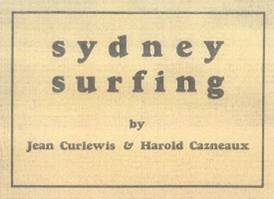 Curlewis, Jean and Carneaux, Harold:
Curlewis, Jean and Carneaux, Harold:
Sydney Surfing.
Arthur McQuitty, McQuitty House, Regent Street, Sydney,
for Art in Australia Ltd., 24 Bond Street, Sydney.
1929, unpaginated.
Image right: Partial cover.
Jean Curlewis - threads collected and collated by A J Guesdon, 2011. All Rights Reserved.